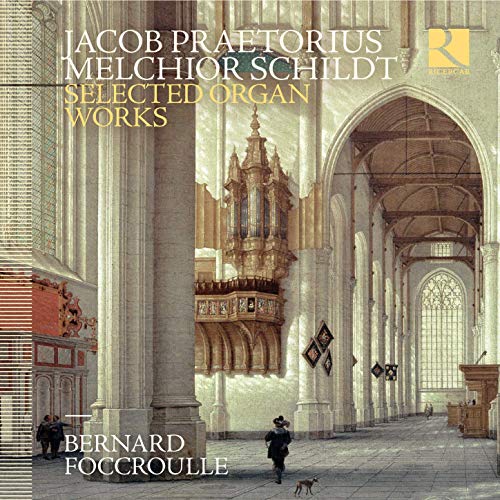Bernard Foccroulle
68:05
Ricercar RIC400
At the heart of this fascinating presentation of two of Sweelinck’s pupils’ organ works by the scholarly Bernard Fouccroule is one of Germany’s more remarkable organs – the Stellwagen organ in its substantially original late gothic case that hangs on the north wall of the Jacobikirche in Lübeck.
Not only is the music beautifully played and presented – the latest in Fouccroule’s anthology of Northern German early Baroque music – but the instrument is splendid for the music. A Schwalbennestorgel (a swallow’s nest organ) was built here in 1467 and this great Blockwerk organ – a substantial principal chorus of 16’, 8’, 4’ and six ranks of upperwork giving the characteristic full organ sound of the period before perforated sliders were introduced to ‘stop’ some of the ranks of pipes sounding – was restored in 1515 when the main case was provided. Then the organ was enlarged in 1636-37 by the addition of a Rückpositiv, a Brustwerk and a pedal organ by the great organ builder Friedrich Stellwagen, the builder of the magisterial instrument in the Marienkirche in Stralsund along the coast to the East.
By great good fortune, he kept the late gothic Blockwerk with only minor additions, so the organ speaks with the authentic voice of the period when both composers were in their prime. The pedal organ has not survived, but the careful conservation and renovation of 1978 (reversing some of the post-WW II ‘restoration’) has given us a Stellwagen-type pedal organ including reeds at 16’, 8’, 4,’ and 2’ pitches. Dominique Thomas is credited with the expert tuning of the organ, which is pitched at A=494 Hz (i.e., a whole tone above modern A=440) in Werkmeister III modified where I was expecting something a little more obviously mean-tone, but it sounds splendid and the reeds are perfectly regulated.
The music from both composers is dominated by the Lutheran chorale, with sets of variations as well as chorale fantasias using Sweelinck’s chromaticism and echo effects as well as plenty of verses where the chorale moves in slower notes in the pedal. The booklet, in English, French and German, has an essay by Fouccroule and not only detailed information about the history of the organ and its specification but importantly detailed registration of every piece, including stop changes. This is surely a must for every significant recording on a historic instrument such as this, where interest in the instrument and its presentation will be of equal significance to the cognoscenti who might buy the CD – as I would encourage them all to do.
David Stancliffe
